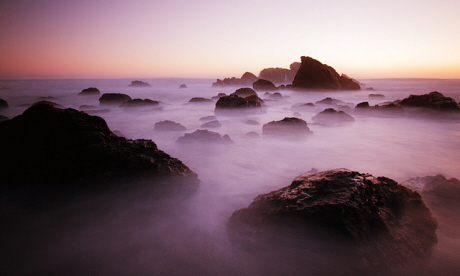
Want to shoot hand-held in low light, or create blur in brilliant daylight? Then get creative with your camera’s ISO settings, says Steve Davey
In the old days, film sensitivity (or ‘film speed’) was a one-time choice. Each film you loaded into your camera had a fixed speed, or ASA, and you had to stick with it for the whole roll.If pressed, you might carry two cameras, containing film with different ASA ratings, but the level of control was limited.But the arrival of digital cameras introduced control over sensitivity – in DSLRs, called the ISO rating. Suddenly, you could change your camera’s sensitivity shot by shot, rather than roll by roll. Initially, there was still a pitfall, though –higher ISO settings had to be used with great caution: they could lead to noisy, low-quality images which were barely usable.
These days, though, sensor technology has advanced to such a level that those old laws have been torn up – sensitivity is just one more variable that can be adjusted for creative or practical reasons.
The sensitivity of your camera controls how much light is required to make the exposure. Measured in the ISO scale, it is identical to the ASA rating of film: a photo shot on an DSLR set to ISO 400 would need the same exposure as that taken using a 400 ASA film.
Sensitivity is measured on the scale: 100 | 200 | 400 | 800 |1600 | 3200 | 6400 – and sometimes even higher numbers. As the ISO number is doubled, half as much light is required.
Each of these whole increments is called a stop, although they are often broken down into half or even third stops. These are the same as the whole increments on the aperture and shutter-speed scales, which are also measured in stops. So if you increase the sensitivity from ISO 400 to ISO 800 you will need half as much light, and can decrease the shutter speed from 1/60 second to 1/125 second.
Increasing sensitivity by a couple of stops can make all the difference. If you are worried about hand-holding at 1/8 second, boost the ISO by two stops and you can shoot at 1/30 second. Combined with Vibration Reduction technology (sometimes called Image Stabilisation), which is built into many lenses, you can handhold the camera at a shutter speed three stops lower than normal, and can shoot in the lowest light levels.
This can completely change your style of photography: you no longer need to use a conspicuous flash that will attract attention and give harsh, less natural light. You will often also be able to avoid the need for a tripod, which itself can cause problems: in some places tripods are banned, and although they will allow you to take pictures with no camera shake, any subject movement will render as a blur.There are times when you might hit the ISO dial for creative reasons. For instance, you might want to use a very fast shutter speed to freeze the movement of a waterfall or a galloping camel, but might not have an aperture wide enough to allow this. If you increase the sensitivity by two stops you could change the shutter-speed from 1/250 to 1/1000 second – enough to freeze most motion!
On the other hand, if you deliberately want to blur motion in bright sunlight – to inject some movement into that galloping camel, for example – reducing the ISO allows you to decrease the shutter speed to 1/60 or below without the image over-exposing.
Higher ISOs also have a reduced dynamic range – in essence, the camera’s ability to render contrast. In practice, this means that you lose detail in shadow areas; sometimes increasing ISO by two or more stops will cause shadows to muddy up and lose definition.
The general rule of thumb is to shoot at as low an ISO as you can get away with, but be prepared to raise it when you feel the need. The highest ISO you can use will depend on your camera, the subject matter, your software, and where you draw the line on quality: if you can tolerate or even embrace noise in your images then you will be happy at higher sensitivities. Run some tests to establish your personal limits.It is also worth shooting at different sensitivities if the subject matter permits. Use a lower sensitivity and risk camera shake, then use a higher sensitivity to make sure that you have the shot in the bag – then pick the best one!
Finally, many cameras have an Auto ISO facility – on this setting the camera will increase the ISO in low light levels. As there are different reasons why you would alter the sensitivity, my suggestion is to switch this off and learn how to change it yourself.
Photography tips: Mastering mountains | Advice... More
Photography tips: snapping sunsets | Advice... More
Night-time photography | Advice... More
Mastering black and white photography | Advice... More